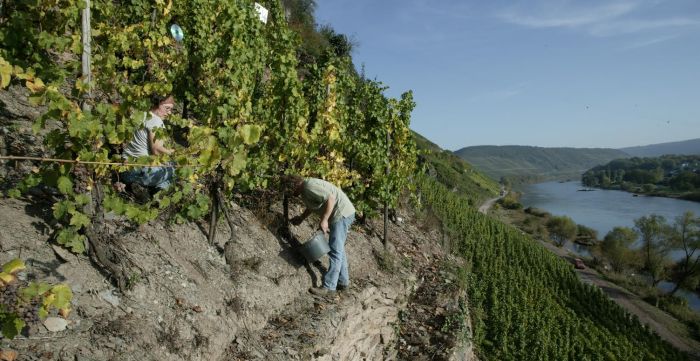Please wait ...

2024 Harvest Reports Coming Soon!

2024 Harvest Reports Coming Soon!
<p>We are running very late here but these are coming soon!</p>
Article
Tips For Navigating the Website.

How to navigate the website.
<p><u><strong>Desktop vs Mobile:</strong></u></p>
<p>We know people use their phones a lot, so we've worked hard on ensuring the site functions well on mobile devices. Having said that, we recommend using a laptop/desktop to optimally peruse our content. </p>
<p><u><strong>Glossary:</strong></u></p>
<p>At its core, this has always been a website written for wine professionals *attempting* to glean information on the wines we import - and hopefully see a picture of the vigneron's dog. Since the jargon can be so technical, we've added an <glossary term="glossary" title="1427">interactive glossary</glossary> to the text for those unfamiliar with the baffllingly complex world of wine terminology. Even if you're a seasoned pro, you might learn a thing or two. And if you'd rather read the content without the glossary, simply head to the main menu bar and turn it off. </p>
<p> "<u><strong>Our Wines" Section: </strong></u></p>
<p>In the "Our Wines" section, we've offered a variety of filter categories for you to explore and discover all the cuvées we import. These filters can be combined together to narrow down results. If you hit a wall with no results, simply erase one of the filters or clear all filters. </p>
<p><u><strong>Technical Information For Each Wine:</strong></u></p>
<p>78% of the wines we import have extremely detailed technical information when clicked on, dare I say the most technical anywhere on the internet. Half of these are probably woefully outdated.</p>
<p><u><strong>Search:</strong></u></p>
<p>If you know what producer or wine you are searching for, the search should quickly autofill what you need. Go ahead, give it a whirl. You can also hit enter after searching and skup the autofill.</p>
<p><strong><u>Hyperlinks/PDFs:</u></strong></p>
<p>Every single piece of content on the website has its own hyperlink. This means you can easily share a specific producer page, article, wine or filter combination with anyone. You can also save or print out PDF's bt clicking the PDF icon.</p>
<p><u><strong>Copy/Paste:</strong></u></p>
<p>Due to the website's design, if you need to copy/paste anything, the glossary needs to be turned off for the text to paste correctly. We recommend using the PDF feature instead. </p>
<p>Also, if you are going to straight up use our writing verbatim, PLEASE credit us when doing so. Seems obvious but we see it happen all the time. </p>
<p><u><strong>A Shit-Ton of Written Content:</strong></u></p>
<p>The articles themselves can often be very long, and for this reason we developed a Propriety Pop Up System™ where you can easily scroll through various articles/wines and "pop out" to efficiently look at the rest of the content.</p>
<p>We've tried our best to pack as many dog pictures as possible in there, but the digital ink has been spilled: the cumulation of decades' worth of writings from Joe, Denyse, Kevin and Jules is here for you to read. A huge part of the work with this new website was to find better ways to condense and extract essential information you need without getting lost in all that BORING text. </p>
<p>We still think you should check it out. Don't worry, there are plenty of pictures. And you might even find the writing interesting. Or funny. Or both. </p>
Article
EXPLORE

A Rainy But Ultimately Satisfying 2024 at Domaine Olga Raffault
<p>2024 was complicated climactically. We harvested many grapes affected by mildew, as we had too much rain and not enough sun. </p>
<p>Harvest started on October 2nd with the Chenin for Champ Chenin under cool but dry weather. The following day we picked the Chenin in Les Picasses in perfect health. On October 4th we began with the Cabernet destined to make rosé, which today consist of our youngest vines in the Bourg of Savigny: they have been farmed organically for four years and our neighbor does not want to vinify them.</p>
<p>On October 7th, the weather began to clear up and we harvested the Cabernet from sandy soils, picking for a week straight until we got to Les Picasses. We wrapped up on October 18th. Eric and Arnaud can confirm the rosé is very aromatic and textural, but for the rest it's a little early to judge. </p>
<p><img src="https://louisdressner.com/uploads/images/article//1027/89/36/8936fe6daef354c4baa817447f3805f4.jpg" /><img src="https://louisdressner.com/uploads/images/article//1027/ad/7d/ad7d9e19a71d218a318fffe9e441cb4c.jpg" /><img src="https://louisdressner.com/uploads/images/article//1027/2b/eb/2bebb6e04700d7600bbb76062271dcda.jpg" /><img src="https://louisdressner.com/uploads/images/article//1027/f0/b2/f0b2e03fd931089aa37a855b6ef469b1.jpg" /><img src="https://louisdressner.com/uploads/images/article//1027/77/36/773640b4bb3b308f21e325f4067c0cd8.jpg" /><img src="https://louisdressner.com/uploads/images/article//1027/21/4e/214e663bc437551d407dda946a46729a.jpg" /><img src="https://louisdressner.com/uploads/images/article//1027/ba/65/ba6507dc1494d04569f3ec6332c6eef5.jpg" /></p>
